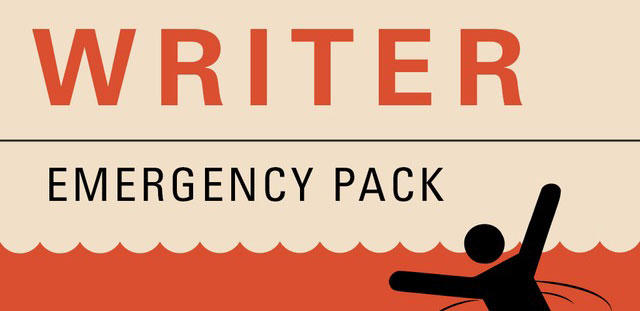John August’s Writer’s Emergency Pack
John August
I ‘ve had the privilege of serving as a Creative Advisor at the Sundance Institute Screenwriters Lab since 2000, working with filmmakers as they get ready to make their next films. In one-on-one meetings, we talk about their scripts, and their ambitions for their films.
In these conversations, I hear myself asking the same questions again and again: “What would happen if…” or “What would the story be like from the daughter’s point of view?” or “Could you jump ahead a few scenes?”
As an Advisor, I never try to change a screenwriter’s story, but rather nudge her into thinking about more options. I want to give her permission to look at her story in a new way.
All writers know how easy it is to get stuck. Once something’s on paper, it’s tempting to think of it as being finished. Permanent. The great thing about these conversations high up in the mountains of Utah is that they’re deliberately speculative and freewheeling. It’s fine to discuss killing the hero on page 50, because it might make you think about her actions later in the story.
Four years ago, I decided to write down some of these questions, rephrasing them as challenges:

Fight the Giant.
Your hero is going to have to face her opponent at some point. Why not right now?
Switch Genres.
What would this story be like as western, a thriller, or a romantic comedy?
What Would Morgan Freeman Say?
If there was an omniscient narrator for your movie, what would he be talking about?
My original instinct was to put these suggestions in an iPhone app, because people always carry their iPhones with them. But pulling out your phone to work on your story felt fundamentally wrong. So I put the project on a high shelf and got back to making movies.
Then a few months ago, inspired by the great projects I saw launching on Kickstarter – including many Sundance Labs films – I went back to my collection of nudges. I realized they made much more sense in print than digital. Atoms versus bits. In the end, a stack of cards felt like the perfect medium: small but sturdy.
The format also suggested a name: Writer Emergency Pack.
Making playing cards, I learned, becomes quite affordable if you can print enough at once. In fact, if we hit big enough numbers, we could afford to send one deck to a youth writing program for each deck we sold.
That felt like a Kickstarter project. If only I knew how Kickstarter worked.
A story, not a store
Kickstarter is not a store. The best way to think about Kickstarter is a place where users can pledge money for things they wish existed. On a podcast, I described it as “a way to bend the universe slightly.”
To figure out how to build a universe-bending deck of cards, I backed a bunch of playing card projects. I looked at how their creators engaged with their backers. I made spreadsheets to see how they set up their pledge tiers. I asked questions about suppliers and schedules.
I discovered the Kickstarter community is a lot like the independent film community. It’s a bunch of people trying to make cool things, and they’re happy to share what they’ve learned if you ask politely.
Missy Laney of the Sundance Institute was also a huge help. She advises indie filmmakers on their campaigns, and has a great sense for what works and what doesn’t. She looked at our page and immediately suggested moving sections around, emphasizing our Give One, Get One aspect. She urged us to forget about our stretch goals (we’d already surpassed them) and instead focus on increasing our total number of backers. Backers are people, and they’re ultimately much more valuable than dollars.
In short, Missy did my job as an Advisor on the mountain at Sundance. I wasn’t making a film, but I was telling a story: about this deck, about youth writing programs, about me.
She asked the what-if questions that helped me get my story to the next level.
As I write this, we’ve exceeded our funding goal wildly, and we’re coming up on 5,000 backers. It’s been great and exhausting – a lot like making a movie.
That’s my final realization about a Kickstarter campaign: while crafting a campaign is like writing a screenplay, running a Kickstarter is a lot like indie filmmaking. Launch day is a lot like the first day of shooting. You suddenly realize your plans may not be realistic, and there are countless fires to fight.
But as you check off each day, you clearly see what you’ve accomplished. Your new backers. The updates. The comments. Like production, it’s a rush.
And then it’s over.
Our campaign ends Thursday, November 20th at noon. That’s wrap. What follows afterward is post-production, and we all know movies are made or lost in the editing room. That’s what we’re facing as we print and mail 10,000 decks of cards to backers and youth writing programs.
It’s a whole new set of challenges. If nothing else, it’ll make for a good story.



